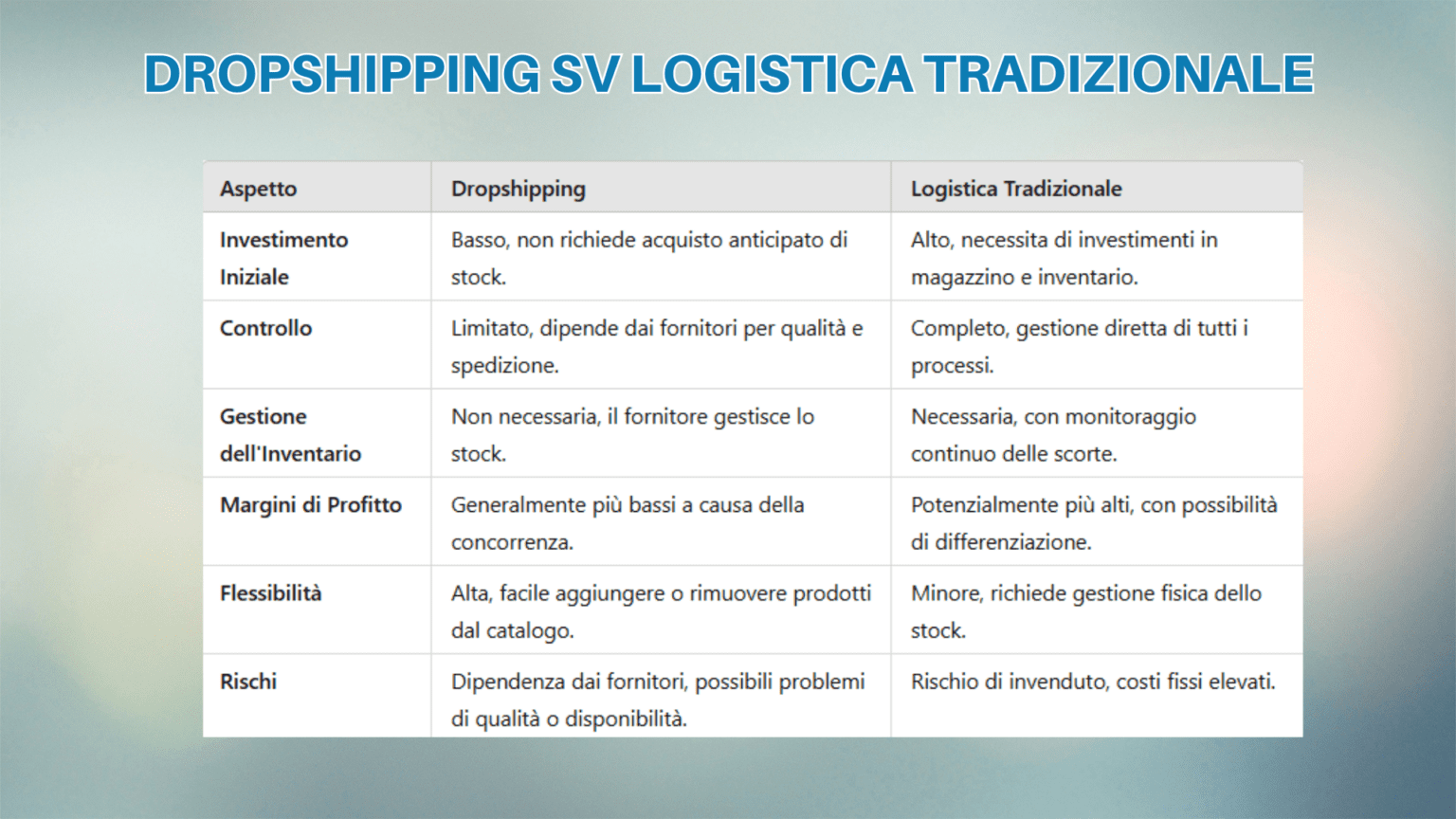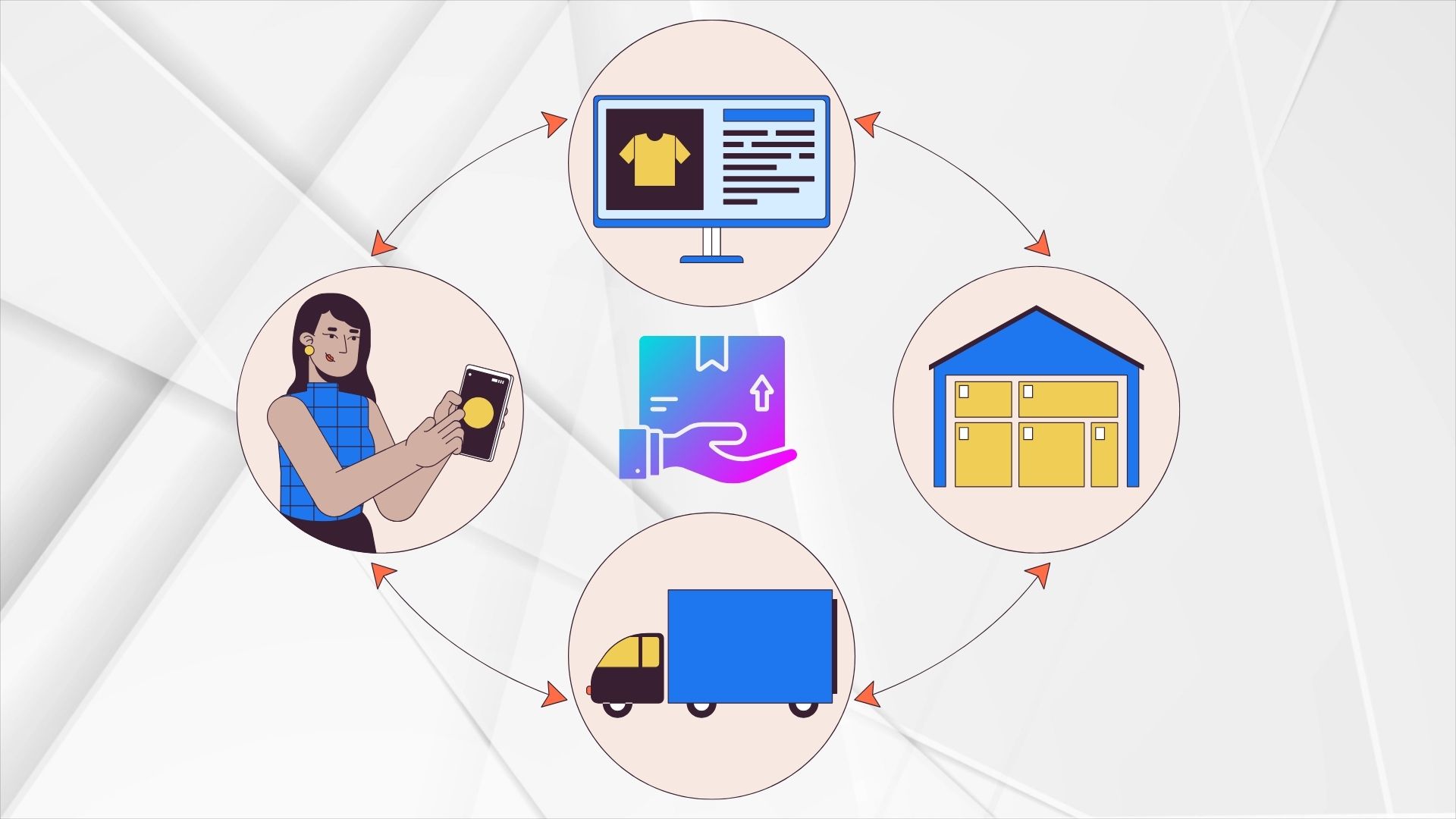The world of e-commerce offers several operational modes for managing sales and logistics. These include the dropshipping and traditional logistics. They represent two distinct approaches, each with specific advantages and challenges.
The choice between one and the other depends on various factors, including the business model, available resources, and business objectives.
What is Dropshipping?
Dropshipping is a sales model retail where the seller does not physically hold the products he or she offers. When a customer places an order, the seller transmits the details of the order to a third-party vendor, which takes care of direct shipment to the end customer. In this way, the seller acts as the intermediary between the customer and the supplier, without directly managing the inventory.
Benefits of Dropshipping:
- Low initial investment: Since there is no need to purchase product stocks upfront, initial costs are low.
- Simplified management: The absence of a physical warehouse eliminates the need to manage storage and internal logistics.
- Flexibility in offering: A wide range of products can be offered without worrying about warehouse space.
Disadvantages of Dropshipping:
- Reduced profit margins: High competition can squeeze profit margins.
- Less control over quality and shipping time: By relying on third-party suppliers, you have less control over these aspects, which can affect customer satisfaction.
- Dependence on suppliers: Any supplier problems, such as out of stock or delays, are directly reflected on the vendor.

What is Traditional Logistics?
Traditional logistics involves the vendor directly manage the entire logistics process, from product purchase to storage to shipment to the end customer. This approach requires investment in infrastructure such as warehouses e dedicated personnel to inventory and order management.
Advantages of Traditional Logistics:
- Full control: The seller has full control over inventory, product quality, and shipping time.
- Personalization of the customer experience: More personalized service can be offered, such as branded packaging or additional services.
- Direct inventory management: Enables better planning and management of inventory, reducing the risk of depletion or excess inventory.
Disadvantages of Traditional Logistics:
- High initial costs: Investment in warehouses, equipment and personnel can be significant.
- Complex management: Requires specific skills in logistics and inventory management.
- Risk of unsold stock: Early purchase of stock carries the risk of not selling all products, resulting in losses.
Comparison of Dropshipping and Traditional Logistics

Which Model to Choose for Your E-commerce?
The choice between dropshipping and traditional logistics depends on several factors:
- Available Capital: If you have a limited budget, dropshipping may be a more affordable solution.
- Brand Control: If you want to have complete control over customer experience and branding, traditional logistics offers more opportunities.
- Operations Management: If you prefer to focus on marketing and sales without dealing with logistics, dropshipping may be more suitable.
- Scalability: Dropshipping allows rapid supply expansion without the constraints of stock, whereas traditional logistics requires more careful planning.
In some cases, a hybrid strategy that combines elements of both models may be the ideal solution, allowing the advantages of both approaches to be exploited.
Conclusions
Both dropshipping and traditional logistics have advantages and disadvantages. The best choice depends on business objectives, available resources, and long-term strategy.
How can FBY help you with your e-commerce management?
Still in doubt about which of the two systems is best for you? Trust the experts at FBY.
The platform FBY handles all your fulfillment: logistics, warehousing, shipping for eCommerce. With its technology, FBY takes care of all your logistics needs, from order collection and inventory management to shipping and returns. This will give you more time to focus on growing your business.
FBY controls a extensive logistics network, both in Italy and in Europe (including France, Spain, Germany and other countries), offering new opportunities for your brand to expand.
If you still have doubts about which model to choose or want to optimize the logistics of your e-commerce, contact us for a free consultation 👉 https://www.fby.solutions/contattaci/




